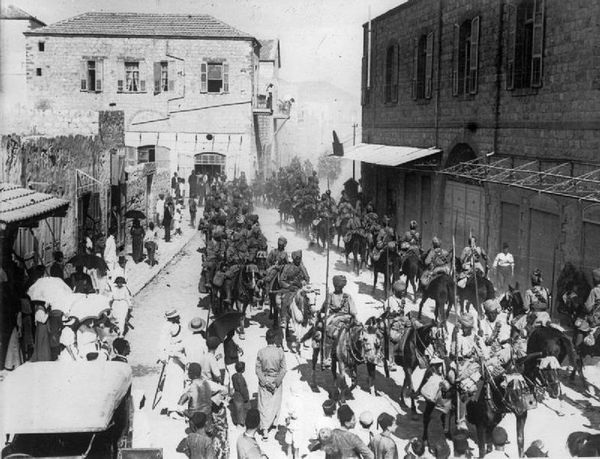Although before 1947 the Indian army was known as the British Indian army, it was practically an Indian force with soldiers from various military races of the Indian sub-continent. The Indian-staffed army was a seasoned fighting force revered for bravely contesting several wars during both the World Wars especially the Battle of Haifa that led to the defeat of the Ottoman Empire in World War I – thereby making Britain’s military a dominant force in the region .
The Battle of Haifa: The British Indian Army vs The Ottoman Empire
The Ottoman Empire decided to side with Germany ahead of the World War I and it all started when their naval ships commanded by their German admiral and manned by their German crews carried out a surprise raid in October 1916 against the Russian ports. No sooner was this raid carried out than the Russians declared war. 4 days later, Russia’s allies France and Britain declared war against the Ottoman Empire on November 5, 1914. This is how the Ottoman Empire was dragged in the war but it’s defeat started in 1918 when the British Indian army comprising the Jodhpur, Hyderabad and Mysore lancers crashed the Ottoman forces in the Battle of Haifa.
Under the commandership of Dalbat Singh Shekhawat and Cyril Rodney Harbord, the Battle of Haifa was fought on September 23, 1918 during the last months of the Palestine and Sinai campaign. It is considered as one of the most bravely contested battles in World War I because it was fought and won with ‘horse cavalry’ despite ‘it being no longer relevant in the battlefield with the introduction of machine guns and barbed wires. Besides, only 400 Indian soldiers were on the battlefield against a sturdy well-equipped 1500 Turkish armed soldiers.
Battle of Haifa: When the Indian Army Liberated Haifa by Defeating the Ottoman Empire in World War I
The Israeli port city of Haifa was a strategic supply base because of its rail and sea connectivity which made the area a crucial place to capture by the Allied forces. The 15th Imperial Cavalry Brigade (earlier Imperial Service Cavalry Brigade) comprising lancers from the regiments of princely state of Jodhpur and Mysore was given the task to take over the Turks in Haifa. While the Indian soldiers were armed only by lances and swords, the Turks were loaded with advanced ateliers and machine guns. Interestingly, in this last cavalry battle of World history, the Indian army comprising of Indian soldiers outsmarted their well-armed opponents with exemplary valour and skills.
buy antabuse online https://buyinfoblo.com/antabuse.html no prescription

The battle of Haifa was won by the 15th Imperial Cavalry Brigade of the Indian Army and the 400-year-old rule of the Ottomans on Hifa was crashed. The Indian soldiers liberated Haifa for which they are applauded and remembered even today by the Israelis. Interestingly, they not only secured the residents but also the spiritual leader of the Bahai faith Abdul Baha, who could have been executed by the Ottomans, which is why along with the India and Israel even the Bahais’ celebrate it as liberation of the Abdul Baha.
buy arava online https://infoblobuy.com/arava.html no prescription
Together, the two regiments – Jodhpur lancers and Mysore lancers captured 17 artillery guns (11 machine guns, 8 77mm guns, 4 camel guns and 4 4.2 guns and a 6-inch naval gun) along with 1,350 Ottoman and German prisoners including 35 Ottoman officers and 2 German officers. The regiment’s own casualties totalled to 8 dead and 34 injured. In the battle, 60 horses were killed and 83 were wounded.
Commander Major Dalpat Singh Shekhawat of the Jodhpur Lancers’ was martyred in the battle, was awarded the Military Cross posthumously while Dafadar Jor Singh, Captain Anop Singh, Captain Aman Singh Bahadur and 2nd Lt Sagat Singh were awarded the Indian Order of Merit (IOM). He is also called as ‘Hero of Haifa’ a title given to him by the Israelis. A memorial stands at Teen Murti chowk in Delhi representing Jodhpur, Mysore and Hyderabad lancers who were part of the 15th Imperial Cavalry Brigade of the Indian Army. It was made by British sculptor Leonard Jennings.
buy asacol online https://infoblobuy.com/asacol.html no prescription
The Mysore and Jodhpur Lancers currently represent the 61st Cavalry Regiment in the Indian Army. 23 September every year is commemorated by the Indian Army as Haifa Day.


